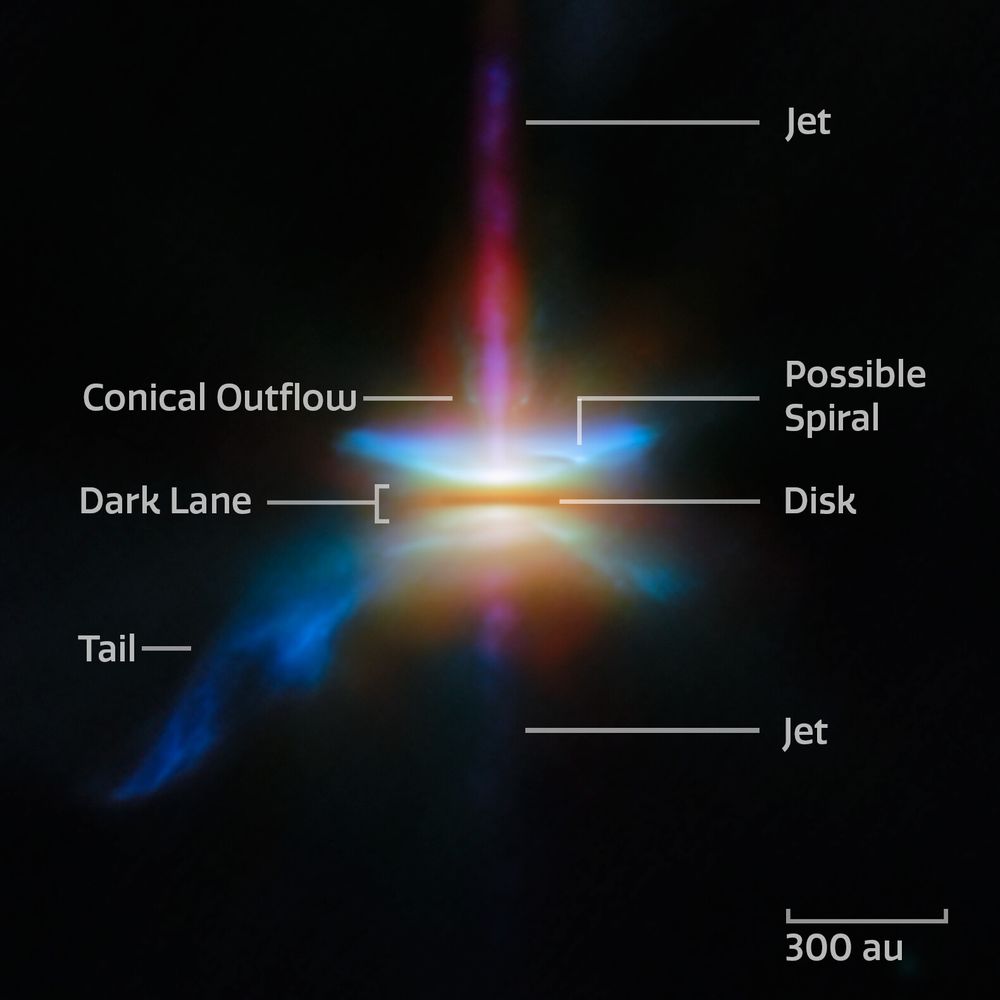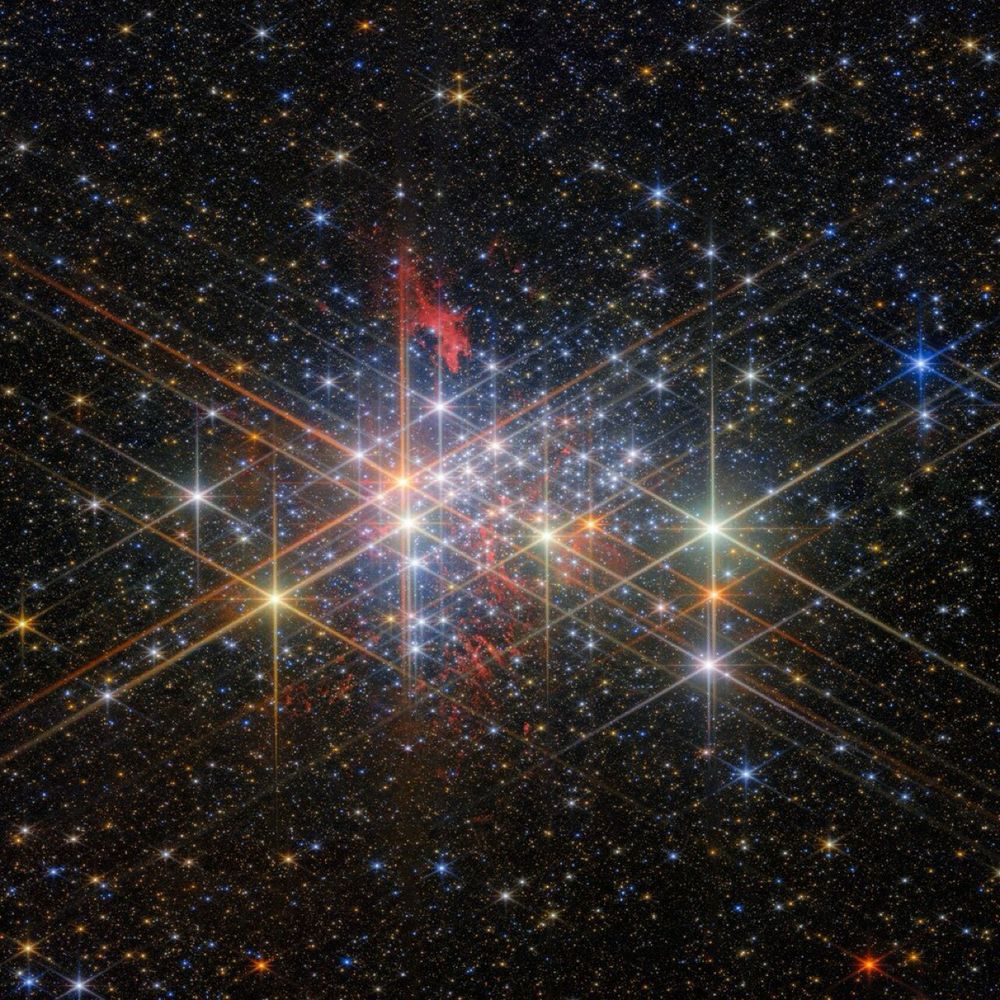
Pi is a new digital currency developed by Stanford PhDs, with over 55 million members worldwide. To claim your Pi, follow this link minepi.com/vtnt9 and use my username (vtnt9) as your invitation code. #PiNetwork
08.03.2025 07:39 — 👍 1 🔁 0 💬 0 📌 0@vtnt9.bsky.social
Step by step - all is achievable.

Pi is a new digital currency developed by Stanford PhDs, with over 55 million members worldwide. To claim your Pi, follow this link minepi.com/vtnt9 and use my username (vtnt9) as your invitation code. #PiNetwork
08.03.2025 07:39 — 👍 1 🔁 0 💬 0 📌 0
A spiral galaxy seen close to face-on. The center of its disk is a bright, pale yellowish, oval shape. Spiral arms extend from either side of the oval through the disk on irregular paths. The arms hold bright bluish-white patches of stars that mark their extent. Distant background galaxies appear as small orangish blobs around the spiral galaxy. In the top-left corner, a nearby star shines brightly, diffraction spikes are radiating from it.
TODAY’S NEW HUBBLE IMAGE SHOWING SPIRAL GALAXY NGC 5460 FROM 60 MILLION LIGHT-YEARS AWAY!!! 🌌
21.02.2025 17:23 — 👍 427 🔁 50 💬 10 📌 3
An image of the supernova remnant IC 443, also known as the Jellyfish Nebula, featuring a semi-circular, shell-like structure of glowing gas illuminated by shockwaves. Numerous stars are visible in the dark sky surrounding the nebula.
The Jellyfish Nebula (IC 443) in January 2024 from Central Maryland with my #Seestar S50. One hour total exposure, processed in Siril and Google Photos. #astrophotography
17.02.2025 15:16 — 👍 24 🔁 2 💬 1 📌 0
A close-in image of protoplanetary disc HH 30. Parts of the image are labelled “Jet” (above and below the disc), “Conical Outflow”, “Possible Spiral”, “Dark Lane”, “Disk”, and “Tail”. A scale marker in the bottom-left is labelled “300 au”; this is a little wider than the disc itself, but less wide than the conical outflows above and below the disc
New JWST image of protostar HH 30, with legend.
🔭 🧪

A wider field view of Westerlund 1. A dense cluster of bright stars, each with six large and two small diffraction spikes, due to the telescope’s optics. They have a variety of sizes depending on their brightness and distance from us in the cluster, and different colours reflecting different types of star. Patches of billowing red gas can be seen in and around the cluster, lit up by the stars. Small stars in the cluster blend into a background of distant stars and galaxies on black.
how it feels to drive at night with astigmatism:
18.01.2025 05:23 — 👍 13451 🔁 1202 💬 499 📌 122SpaceX confirms that Starship broke apart during its ascent burn.
A passenger on the Royal Caribbean cruise ship "Icon of the Seas" posted this video, with the ship's current location in the Atlantic matching other debris sightings.
Video source: x.com/FlyerXT/stat...

An area in the Orion nebula filled with dark, puffy clouds. On the image’s right side is a large area of clouds crossed by a dark bar. The region glows in red and whitish colors lit by a protostar within. At the other side a large jet of material ejected by the protostar appears to be made of thin, wispy, blue, and pink clouds. A couple of foreground stars shine brightly in front of the nebula.
NEW HUBBLE IMAGE OF THE ORION NEBULA!!!! 🌌
17.01.2025 17:07 — 👍 6025 🔁 491 💬 44 📌 9
Well... Let's meet!
More info regarding the project I'm working on currently: www.reddit.com/r/startups/c...
Feedback is appreciated
Thank you 🙏

This wild looking galaxy looks like it's on fire! Massive bursts of star formation at its core is expelling violent winds and blowing gas and dust out of the galaxy. This is M82, aka the Cigar Galaxy. I exposed my camera using my Ceravolo 300mm telescope for a total of 24 hours
#astronomy #galaxies

The explosion is over, but the consequences continue. About eleven thousand years ago, a star in the constellation of Vela could be seen to explode, creating a strange point of light briefly visible to humans living near the beginning of recorded history. /1
16.01.2025 00:26 — 👍 1003 🔁 99 💬 12 📌 3
A cosmic ocean of glowing hydrogen gas, along with small amounts of other elements such as oxygen and sulphur.
Known as M17 (or the Swan or Omega Nebula), this star forming region resides 5,500 light-years from Earth.
Credit: NASA, ESA and J. Hester (ASU)

Our cat, sleeping with legs sprawled open
dgaf
16.01.2025 04:49 — 👍 5336 🔁 221 💬 112 📌 12
The James Webb Space Telescope's Near-Infrared Camera (NIRCam) has unveiled the majestic spiral galaxy NGC 3627 in exquisite detail. The image showcases the galaxy's grand design, with prominent spiral arms winding outwards from a luminous central core. The arms are studded with clusters of young, hot stars, while the core harbors a supermassive black hole. The image also reveals a delicate dusting of interstellar dust lanes, tracing the galaxy's intricate structure.
Almost every white pixel here is a star.
NGC 3627: processed by @thocarp.bsky.social
www.flickr.com/photos/19746...
🔭 🧪

The Crab Nebula's complex oval structure lies against a black background. On the nebula’s exterior lie curtains of glowing red and orange fluffy material. Interior to this outer shell lie large-scale loops of mottled filaments of yellow-white and green. Many points of blue-white light are visible within and around the nebula.

Three massive pillars of gas and dust extend upward through the image, in descending order of height from left to right. They are mostly opaque and dark brown, against a background of blue, green, and gold dust and gas. A few scattered pinkish stars are visible throughout.

Cosmic Reef. A massive, ridged region of dark red and blue gas and dust glows, covering most of the image. A smaller blue nebula shines to its lower left. Stars shine throughout.

Butterfly Nebula. Two enormous, knotted lobes of pink, red, and white gas and dust extend out from a central point and diagonally to the top right and lower left. The lobes resemble the wings of a butterfly, and they glow against black space dotted with more distant stars and galaxies.
someone in my replies said hubble is “so 90s” and i just wanted to say this is the incredible beauty we’ve gotten from hubble over the years 🌌
15.01.2025 03:15 — 👍 617 🔁 90 💬 27 📌 2
This image shows the Antennae Galaxies (NGC 4038 & NGC 4039), 60 million light-years away in Corvus. These galaxies are in the process of merging, creating tidal tails and bursts of star formation from their gravitational interaction.
Photo Credit: Robert Gendler

A screenshot of an old tweet of mine from 2020 with two pictures of Europa side by side and text reading: “Europa, another beautiful ocean world that may hold the secrets to life. NASA will be heading there with the Europa Clipper mission 🤩”
imagine telling me that 5 years later i’d be on the europa clipper team.
life is so crazy, don’t EVER give up on your dreams.

An infrared light echo traveling from the lower left through the upper right of the image. The image is speckled with dozens of white stars, some showing Webb’s signature 8-point diffraction spikes, against the black background of space. The image also shows tightly packed, glowing red filaments that resemble muscle fibers or wood grain. Credit: NASA, ESA, CSA, STScI, J. Jencson (Caltech/IPAC)
genuinely this just became one of my favorite jwst images ever. it looks like a cosmic painting!!!
what a GREAT way to start 2025.

One of my favorite images from 2024. The Soul Nebula, located in the constellation Cassiopeia. #astronomy #Photography #space #bluesky
12.01.2025 17:57 — 👍 490 🔁 39 💬 9 📌 1
The nearly full moon

The Owl Cluster

The Blue Snowball Nebula

A blurry image of Mars showing features
More clear skies and my first chance this winter to enjoy the night sky: the nearly full moon, the Owl Cluster and the Blue Snowball Nebula. And, given the #unistellar #odyssey scopes are designed for deep space objects, I was pleased with my image of Mars - blurry but still showing features. 🥰
12.01.2025 09:25 — 👍 13 🔁 1 💬 0 📌 0
IC434 is a region of ionized hydrogen in the constellation Orion. It is best known for a dark feature known as the Horsehead nebula.
This is the IC434 region, part of the Orion molecular cloud complex, which includes the Horsehead Nebula and the Flame nebula.
#astronomy #astrophotography
 12.01.2025 21:25 — 👍 53 🔁 2 💬 6 📌 0
12.01.2025 21:25 — 👍 53 🔁 2 💬 6 📌 0

This composite image features the galaxy group Stephan's Quintet, combining Webb's infrared data with X-rays data by Chandra and including infrared data from the Spitzer telescope (red, green, blue). The JWST data (red, orange, yellow, green, blue) shows incredible details of the galaxy interactions, including sweeping tails of gas and bursts of star formation. Stephan's Quintet is a visual grouping of five galaxies located about 290 Mly away in the constellation Pegasus; clockwise from upper left: NGC 7320, NGC 7319, NGC 7318 (a and b), NGC 7317.
🧵
1/
Look at this marvel!
The composite image, featuring the galaxy group Stephan's Quintet, combines Webb's infrared data with X-rays data by Chandra.
Stefan's Quintet, along with other cosmic objects, is part of the first Webb's observations.
➡️ chandra.si.edu/photo/2022/c...
🔭 🧪 #extragalactic

This infrared view of the Pleiades (M45), captured by WISE spacecraft. Light & winds from the cluster’s stars shape the dust into filaments. Located 450 light-years away in Taurus, the image spans about 20 light-years.
Credit: WISE, IRSA, NASA
Processing: Francesco Antonucci



Planning a trip up to the Last Frontier? Check out my travel guides now live on my website. I have guides to Anchorage and Fairbanks, check out Fairbanks here: theauroraguy.com/pages/fairba...
11.01.2025 20:16 — 👍 57 🔁 3 💬 1 📌 0
📷 This NASA/ESA/CSA James #Webb Space Telescope image shows NGC 346, one of the most dynamic star-forming regions in nearby galaxies, and the study of which recently solved a puzzle by proving a controversial finding made using NASA/ESA #Hubble over 20 years ago!
www.esa.int/Science_Expl... 🔭🧪

The Crescent Nebula (NGC 6888), located 4,700 light-years away in Cygnus, was formed by the massive Wolf-Rayet star WR 136. About 250,000 years ago, the star’s strong winds compressed surrounding gas into glowing shells. WR 136 is expected to go supernova within a million years.
Credit: Team ARO
 11.01.2025 00:12 — 👍 492 🔁 108 💬 7 📌 3
11.01.2025 00:12 — 👍 492 🔁 108 💬 7 📌 3
 11.01.2025 15:03 — 👍 1579 🔁 433 💬 31 📌 14
11.01.2025 15:03 — 👍 1579 🔁 433 💬 31 📌 14